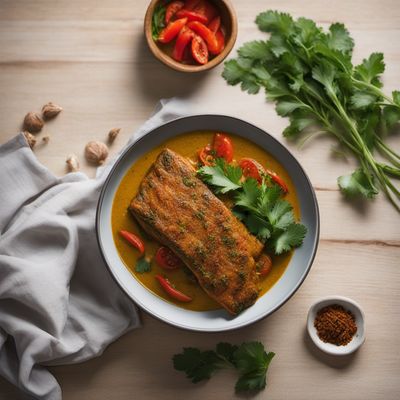
Dish
Mchuzi wa samaki
Fish Stew
Mchuzi wa samaki is a healthy and nutritious dish that is high in protein and low in carbohydrates. The fish is a good source of omega-3 fatty acids, which are important for heart health. The dish is also rich in antioxidants, thanks to the addition of spices such as turmeric and cumin.
Origins and history
Mchuzi wa samaki has been a staple of Tanzanian cuisine for centuries. It is believed to have originated in the coastal regions of Tanzania, where fresh seafood is abundant. The dish is typically served with rice or ugali, a type of cornmeal porridge.
Dietary considerations
This dish is not suitable for individuals with fish allergies or nut allergies.
Variations
There are many variations of mchuzi wa samaki, depending on the type of fish used and the seasonings added to the stew. Some recipes call for the addition of vegetables, such as tomatoes or bell peppers, while others use different types of spices or herbs.
Presentation and garnishing
Mchuzi wa samaki is traditionally presented in a large bowl, with the fish and vegetables arranged in a neat row. The stew can be garnished with fresh herbs or a sprinkle of coconut flakes for extra flavor and texture.
Tips & Tricks
To ensure that the fish is cooked evenly, be sure to add it to the stew towards the end of the cooking process. This will help to prevent the fish from overcooking and becoming tough. Be sure to remove any bones from the fish before serving, as they can be a choking hazard.
Side-dishes
Mchuzi wa samaki is typically served with a side of rice or ugali. A simple green salad or a side of steamed vegetables can also be served alongside the stew.
Drink pairings
A dry white wine, such as a Sauvignon Blanc or Pinot Grigio, pairs well with mchuzi wa samaki. For a non-alcoholic option, try a coconut water or a fruit juice.
Delicious Mchuzi wa samaki recipes
More dishes from this category... Browse all »

Abaco Baked Grouper
Bahamian cuisine

Acqua pazza
Italian cuisine

Agujjim
Korean cuisine

Ajoarriero
Spanish cuisine

Albóndigas de bacalao
Spanish cuisine

Anguilla alla Bisentina
Italian cuisine

Anguilla alla giovese
Italian cuisine

Anguilla alla muranese
Italian cuisine



